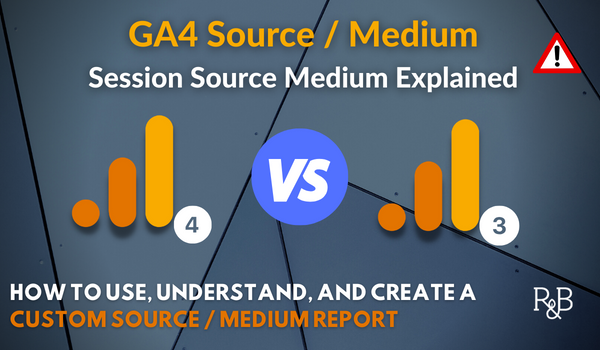Discovering the Principle of Secondary Dimensions in Google Analytics: Interpretation and Tactical Application
Discovering the Principle of Secondary Dimensions in Google Analytics: Interpretation and Tactical Application
Blog Article
Using the Power of Secondary Dimension in Google Analytics to Fine-tune Your Marketing Technique and Drive Outcomes
In the realm of digital marketing, the capability to fine-tune techniques and attain tangible results is extremely important for services making every effort to stay competitive in today's landscape. Leveraging the power of additional dimensions within Google Analytics opens up a realm of possibilities for marketing experts seeking to acquire much deeper insights into individual actions and customize their campaigns with accuracy. By discovering covert patterns and refining audience division, organizations can craft targeted approaches that reverberate with their clients on a profound level. The prospective to gauge project efficiency with a granular lens better stresses the importance of harnessing this tool to drive success.
Recognizing Additional Measurements
When examining data in Google Analytics, understanding second measurements is important for getting deeper insights into customer actions and web site performance. Key measurements offer basic details such as the variety of individuals or sessions, yet additional dimensions supply an even more comprehensive sight by enabling users to sector and analyze information additionally. By adding an additional dimension, online marketers can refine their evaluation and discover beneficial patterns that may have or else gone unnoticed.
Second measurements in Google Analytics can be put on numerous metrics such as web traffic resources, user demographics, and actions flow. For instance, by integrating the key dimension of 'touchdown web pages' with the secondary measurement of 'device classification,' marketing professionals can figure out which gadgets are driving web traffic to specific touchdown web pages. This details can help enhance web site layout and content for better customer experience across different devices
Analyzing Individual Habits Patterns
To effectively understand individual habits patterns, an extensive analysis of data within Google Analytics is vital. By diving right into customer actions patterns, online marketers can get valuable insights into how visitors interact with their website, which pages are most appealing, and where prospective traffic jams or drop-off points may exist in the conversion funnel. Google Analytics uses a series of devices to examine individual habits, such as behavior flow reports, event tracking, and goal funnels.
Actions circulation records give a graph of exactly how individuals navigate through the website, revealing the most common paths customers take along with where they hand over. Event monitoring enables marketers to monitor specific interactions on the site, such as button clicks or video clip sights, offering a deeper understanding of customer interaction. Goal funnels track the steps customers take in the direction of completing a particular goal, highlighting locations for enhancement in the conversion process.
Enhancing Target Market Segmentation
Upon analyzing customer habits patterns, online marketers can further maximize their techniques by improving target market segmentation strategies in Google Analytics. Target market division permits the classification of web site visitors right into particular groups based on different characteristics such as demographics, habits, and rate of interests. By using Google Analytics' secondary measurements, marketing professionals can refine these sections also additionally to gain deeper understandings into their target market's actions and choices.
Enhancing target market segmentation makes it possible for online marketers to create even more targeted and personalized marketing campaigns. By recognizing distinct customer groups, marketing experts can tailor their messaging, web content, and offers to much better resonate with each section's distinct features and needs. This level of customization can considerably enhance involvement, conversion prices, and overall advertising performance.
Additionally, with boosted audience segmentation, marketing experts can better understand the consumer journey and enhance touchpoints along the path to conversion. By examining just how various sectors connect with the site and advertising networks, marketing professionals can recognize possibilities to enhance user experience, address pain points, and eventually drive more conversions. In general, refining target market division in Google Analytics is an effective method for optimizing advertising and marketing performance and driving sustainable service development.
Tailoring Advertising Campaigns
Marketing experts can maximize their advertising projects by tailoring web content and messaging to fit the distinct qualities and requirements of particular target market sections. Tailoring marketing projects includes creating individualized experiences that reverberate with different groups click for info of consumers. By leveraging understandings from additional dimensions in Google Analytics, marketing professionals can acquire a deeper understanding of their audience's actions, choices, and demographics. This data allows for the creation of targeted projects that speak straight to the rate of interests and pain points of specific sectors, boosting the likelihood of involvement and conversion.
Through the analysis of secondary measurements such as traffic resources, tools utilized, or geographical location, marketers can tweak their messaging to be more impactful and relevant. For instance, a shopping firm may find via Google Analytics that visitors from social networks networks have a greater conversion price than those from organic search. Equipped with this expertise, the business can change its advertising and marketing strategy to focus a lot more on social media sites platforms to drive better results. By customizing advertising and marketing projects based upon understandings from secondary dimensions, organizations can optimize the performance of their efforts and ultimately drive much better ROI.
Gauging Campaign Effectiveness

One crucial aspect of determining campaign efficiency is tracking conversions. By establishing up objectives in Google Analytics, businesses can keep track of certain activities taken by customers as an outcome of the project, such as look at this website signing or making a purchase up for an e-newsletter. Comprehending the conversion price and the conversion course can supply important insights right into the effectiveness of different marketing networks and messages.
Moreover, evaluating metrics such as click-through rates, bounce prices, and session period can assist marketers assess user engagement and the impact of the project on internet site web traffic. By integrating primary metrics with additional dimensions in Google Analytics, companies can refine their marketing approaches, maximize campaign performance, and drive better outcomes.
Final Thought
Finally, utilizing the power of secondary measurements in Google Analytics can supply beneficial understandings into customer habits patterns, enhance target market segmentation, dressmaker advertising campaigns, and measure campaign efficiency. By using this attribute properly, services can refine their marketing approaches and drive much better results. It is crucial for marketing professionals to leverage the information offered through additional dimensions to make educated choices and optimize their projects for maximum influence.

Report this page